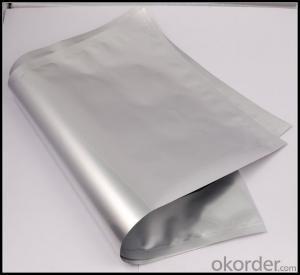Aluminum foil is a ubiquitous item in our daily lives, often taken for granted. It’s the go-to for wrapping up leftovers, cooking certain dishes, and even for some arts and crafts projects. But have you ever wondered about the journey of this thin yet versatile material from production to retail? Let’s dive into the economics of aluminum foil, exploring its production process, environmental impact, market dynamics, and its role in our lives.
The Making of Aluminum Foil
Aluminum foil starts its life as bauxite, an abundant mineral found in various parts of the world. The process of turning bauxite into foil is quite fascinating and involves several steps. Initially, bauxite is crushed and mixed with caustic soda to form alumina, which is then purified through a process called the Bayer Process. The purified alumina is then heated to extremely high temperatures, causing it to crystallize and form aluminum oxide. This aluminum oxide is then reduced to aluminum metal through the Hall-Heroult process, which involves the use of carbon anodes in a solution of aluminum oxide dissolved in molten cryolite. The result is pure aluminum, which is then rolled into thin sheets to create the foil we know and love.
Environmental Considerations
While aluminum foil is incredibly useful, it’s essential to consider its environmental impact. The production process, particularly the extraction of bauxite and the energy-intensive smelting process, can have significant effects on the environment. However, aluminum is a highly recyclable material, and recycling it saves up to 95% of the energy required to produce new aluminum from bauxite. This makes recycling aluminum foil an important practice for reducing its overall environmental footprint.
Market Dynamics and Demand
The demand for aluminum foil is driven by various factors, including population growth, economic development, and technological advancements. The food and beverage industry is a significant consumer of aluminum foil due to its use in packaging and cooking. Additionally, the pharmaceutical and cosmetics industries also rely on aluminum foil for their products. The market for aluminum foil is competitive, with numerous players vying for market share. Prices can fluctuate based on supply and demand, as well as global economic conditions.
The Role of Aluminum Foil in Our Lives
Aluminum foil has become an indispensable part of our lives. It’s not just for cooking and food storage; it has found its way into various other applications. From insulation in construction to its use in the automotive industry, aluminum foil’s versatility is unmatched. It’s also a popular material for arts and crafts, allowing for creativity and innovation in various projects.
The Future of Aluminum Foil
Looking ahead, the future of aluminum foil seems promising. With a growing awareness of sustainability and the need for eco-friendly materials, aluminum foil’s recyclability positions it as a favorable option. Innovations in production techniques and the development of new applications will likely drive demand and ensure its continued relevance in our lives.
In conclusion, the economics of aluminum foil is a complex interplay of production, environmental impact, market forces, and consumer behavior. As we unwrap a piece of foil for our next meal or project, let’s take a moment to appreciate the journey it has taken to get to us and consider our role in its lifecycle. Whether it’s using it mindfully or recycling it responsibly, each of us has a part to play in shaping the future of this everyday material.

